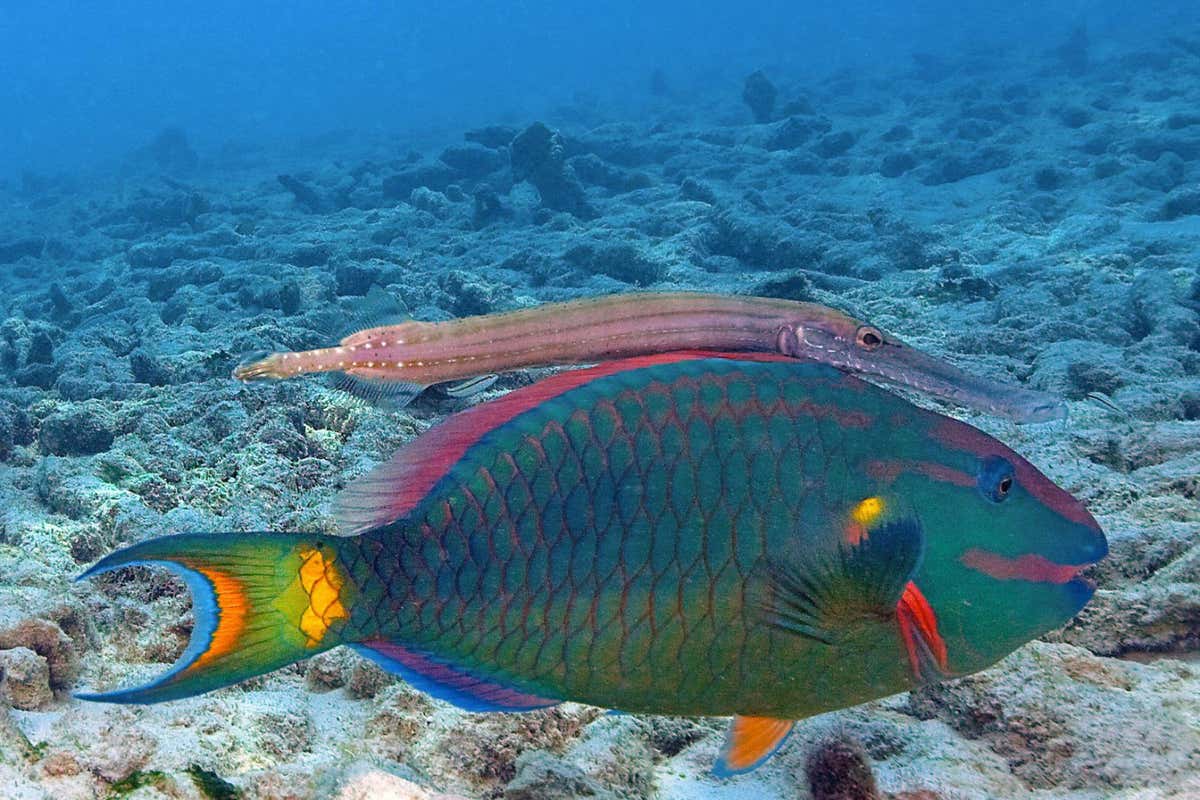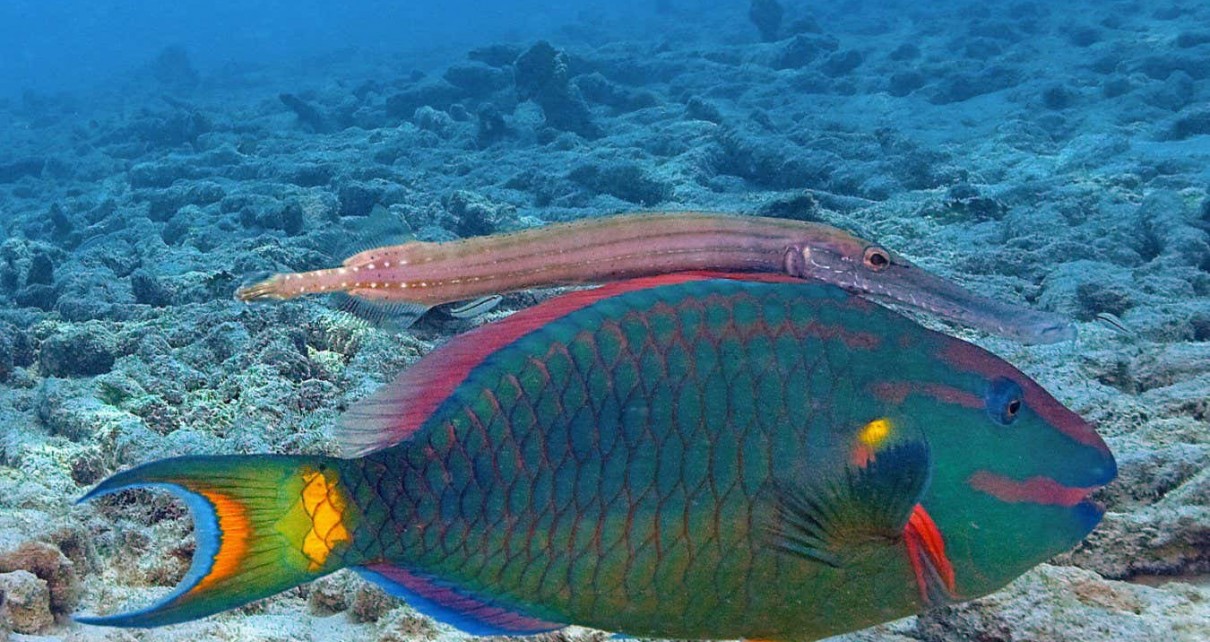[ad_1]
A species of tropical fish swims behind other fish to hide itself while hunting for prey. Better understanding these behaviours could help scientists predict how some animals may adapt to the potential degradation of coral reefs.
Over the past few decades, divers in the Caribbean have spotted West Atlantic trumpetfish (Aulostomus maculatus) – a small coral reef-dwelling predator – swimming alongside larger, non-predatory fish, such as stoplight parrotfish (Sparisoma viride), which they don’t prey on.
Swimming close to parrotfish may allow trumpetfish to get nearer to their prey without spooking them, says Sam Matchette at the University of Cambridge. To test this idea, Matchette and his colleagues wanted to know whether one of the trumpetfish’s most common targets, a species of damselfish (Stegastes partitus), are really duped by this technique.

A stoplight parrotfish (Sparisoma viride), bottom, and West Atlantic trumpetfish (Aulostomus maculatus), top, off the island of Bonaire in the Caribbean
Helmut Corneli / Alamy
In coral reefs off the Caribbean island of Curaçao, the researchers set up tripods connected by a nylon line so that 3D models of dummy fish could be pulled past colonies of real damselfish.
First, they pulled a model of a trumpetfish over damselfish, finding that the latter quickly fled. They then dragged a model of a parrotfish over damselfish, finding that they continued their activity as normal. But when both trumpetfish and parrotfish were pulled over together, mimicking how trumpetfish swim closely to parrotfish, the damselfish fled, suggesting that they are familiar with this tactic. The series of experiments was repeated on 36 damselfish colonies at three locations around the island.
This strongly suggests that trumpetfish shadow other types of fish to get nearer to their prey, says Matchette. “This is the first non-human example of an animal using another animal as camouflage to get close to or to conceal themselves from their prey,” he says. For example, human hunters commonly approach birds such as ducks by crouching behind horses – this is where the term “stalking horses” comes from.
Rising sea temperatures could affect the coral reef habitats that some fish live in. “They are going to end up patchier, less complex and less biodiverse,” says Matchette. Fish species that rely on reefs for concealment from their prey may have to start mimicking trumpetfish’s behaviour, which is important for scientists to understand as these ecosystems change. “If the ability to use the reef itself as cover is taken away, then maybe this alternative strategy of using other fish around your other organisms around you for cover might become more commonplace in the future,” he says.
“This is an excellent example of where a fascinating piece of observational natural history is turned into hard science by focused experimentation,” says Innes Cuthill at the University of Bristol, UK. It strongly suggests that trumpetfish swim closely to fish such as parrotfish to give them a predatory advantage, rather than to give them protection against their own predators, for example, he says.
Topics:
[ad_2]
Source link




